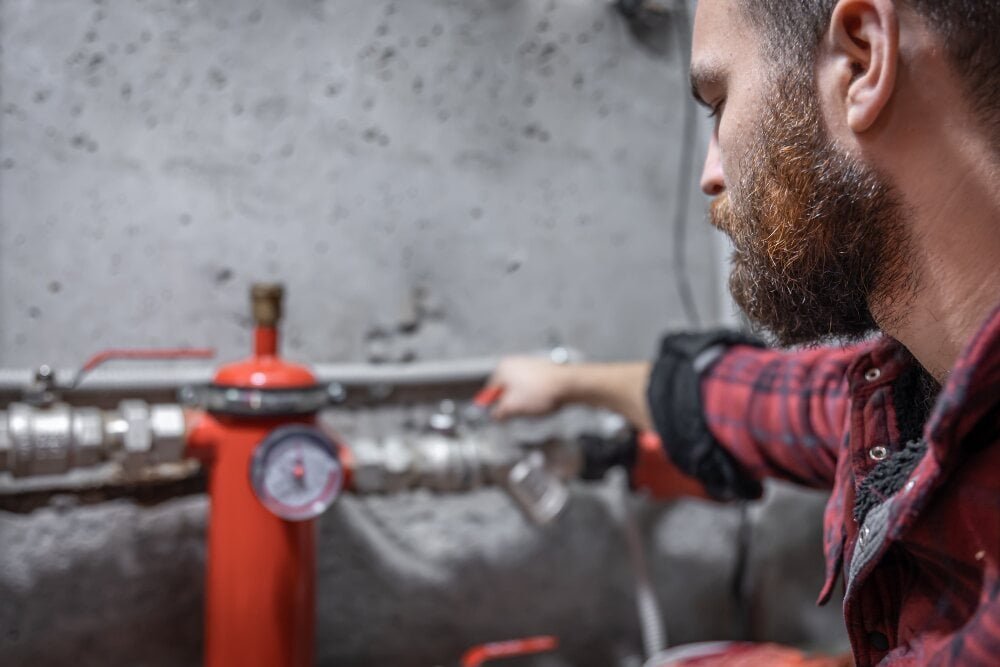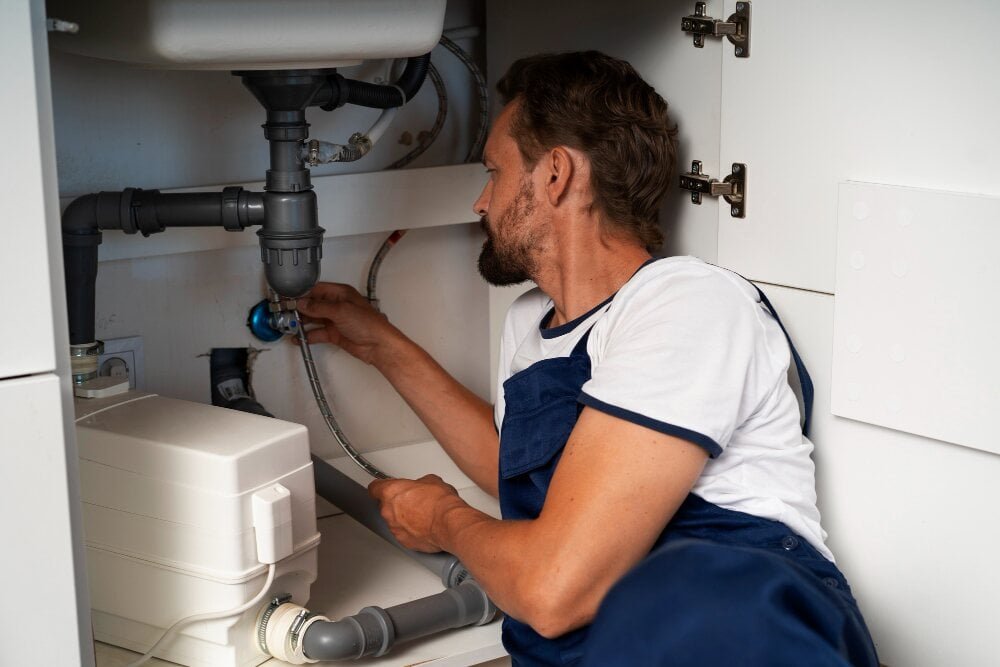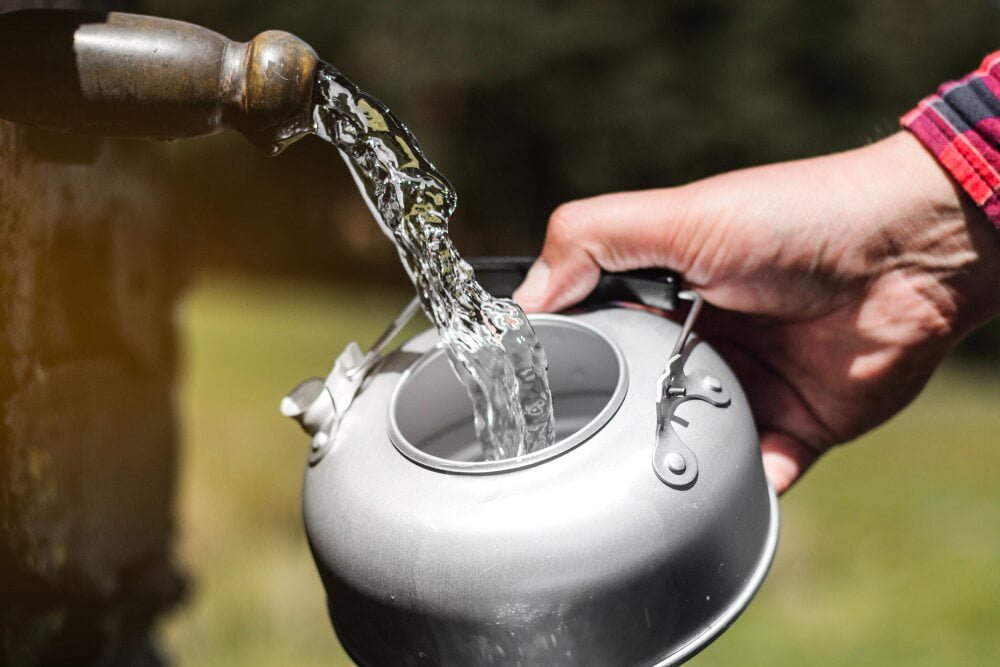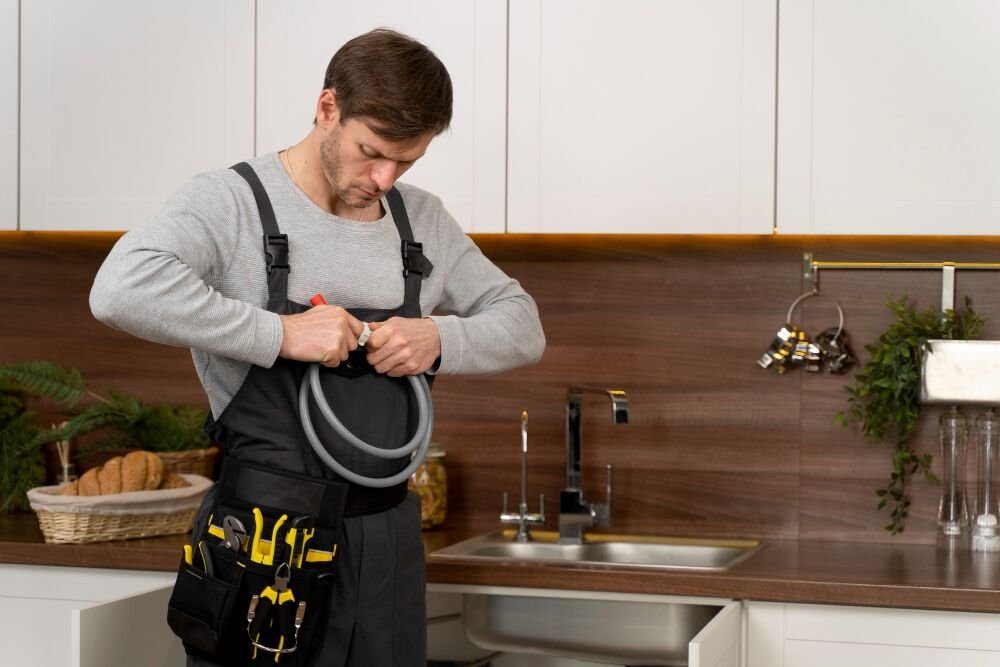Ever wondered “why is my water pressure so bad?” There could be a bunch of issues that may cause low water pressure in your crib. It might be the pressure reducing valve cranking down the flow more than it should, or a sneaky leak in the pipes in the home that’s result in water leaks. First up, check the water valve in your home (especially the one near the water heater) to make sure it’s fully open for max water flow. In this excusive post we will dig deep to fix low water pressure problems.
Understanding Your Pressure Regulator’s Role in Water Pressure
Ever scratched your head and wondered, “why is my water pressure so moody?” A big player behind scenes is your pressure regulator. This champ sits where the main water supply enters the home, silently ensuring water peace. If you’re hitting a low water pressure problem, don’t rush to replace the water stuff without checking this guy. It keeps your water pressure throughout your home steady, preventing that annoying drop in water pressure during prime shower time.
Now, if your home’s water usage spikes or if you’ve added a water softener into the mix, your regulator makes sure things don’t go haywire, keeping water pressure coming from the municipal water system just right. Got bad pressure? Hook up a water pressure test gauge to a valve on the main water line to check if the pressure’s wonky. It’s a solid first step to fix low water pressure problem without dialing up your local water supplier in a panic.
Remember, poor water pressure isn’t a death sentence for your showers and taps. It could be your cue to tweak the pressure regulator or look into adding a pressure tank. This can improve the water pressure without changing the pressure setup that’s already doing its best. So the next time you’re puzzled by water pressure woes, start where your home is connected to the main water supply. A little understanding goes a long way in keeping the flow just right.
How does a pressure regulator affect water flow?

A pressure regulator controls the water pressure entering your home. It ensures the water pressure is within a safe range for your plumbing system. A malfunctioning pressure regulator can restrict the flow of water, leading to low water pressure.
Diagnosing pressure regulator related water pressure problems
If your water pressure seems low throughout your home, the pressure regulator may be the culprit. Look for signs of damage or wear on the regulator, like cracks or leaks. Test the water pressure at the regulator to see if it’s significantly lower than the municipal water supply pressure.
Steps to adjust your pressure regulator for better water pressure
Locate your pressure regulator, often near the water meter or main water line. Use a pressure gauge to measure the pressure before and after the regulator. Adjust the regulator’s settings to increase the pressure to the optimal range for your home. Test the water pressure at various fixtures to ensure improved flow.
Identifying and Repairing Water Leaks to Improve Water Pressure
Ever wondered “why is my water pressure so bad?” You’re not alone. When experiencing low water pressure, it’s a total bummer, especially when you’re trying to hurry in the morning. Before you reach out to your water supplier, give a quick check the water pressure in your whole house. Sometimes, the culprit could be as simple as a partially closed water meter valve or a faulty water pressure regulator.
If you find out the water pressure is low only with hot and cold water, it might hint towards issues specific to your house water supply, like hard water buildup or a sneaky leak causing water damage. To increase water pressure, start by ensuring valves near the main water shutoff and the water supply pipe are fully open. This might just restore normal water pressure.
Still got issues? Time to test your home’s water pressure and scrutinize the home’s water flow for any discrepancies. Identifying the cause of the low water involves checking pipes for leaks or blockages. Sometimes, improving water pressure in your house could mean upgrading pipes or fixing leaks that suck away your precious pressure coming from your local water source. Don’t forget to inspect the public water supply for broader issues affecting water pressure throughout your neighbourhood.
Finding and fixing leaks or consulting with a pro can drastically increase the water pressure and make showers and chores a breeze again. Remember, the key to consistent water pressure in a home involves regular checks and maintenance to avoid the dreaded dribble and protect your home from potential water damage.
Common signs of water leaks leading to low water pressure

Unexplained spikes in your water bill can indicate hidden leaks. Damp spots on walls, floors, or ceilings may point to leaks in the plumbing. Low water pressure at multiple fixtures could signal a larger leak in the water line.
How to locate water leaks in your home
Start by checking visible pipes and faucets for any drips or cracks. Use a water pressure gauge to identify pressure drops that could signify a leak. For hidden leaks, consider hiring a plumber to perform a pressure test on your plumbing system.
Fixing leaks to restore water pressure: A homeowner’s guide
Once you’ve located the leak, shut off the water supply and make the necessary repairs. This may involve tightening fittings, replacing washers, or repairing pipe damage. After fixing the leak, turn the water back on and test the pressure at various fixtures.
Maximizing Water Pressure by Adjusting the Main Water Valve
Is your main water valve fully open? How to check and adjust
Locate your main water valve, usually near the water meter or just outside your home. Ensure the valve is fully open by turning it counterclockwise as far as it will go. A partially closed valve can significantly reduce the water pressure entering your home.
The impact of partial valve closure on home water pressure
A partially closed main water valve restricts the volume of water flowing into your home. This can lead to low water pressure at multiple fixtures, especially when using water simultaneously. Fully opening the valve will allow the maximum flow of water and improve overall pressure.
Enhancing Flow with Water Pressure Boosters and Pressure Gauges

Selecting the right pressure booster for your water system
If adjusting the pressure regulator and main valve doesn’t solve low water pressure, consider installing a water pressure booster. Choose a booster with the appropriate flow rate and pressure range for your home’s water needs. Make sure the booster is compatible with your existing plumbing and electrical systems.
How to install and use a water pressure gauge
A water pressure gauge can help you accurately measure the water pressure in your home. Install the gauge at a fixture or near the main water line to get a reading. Use the gauge to monitor your water pressure and identify any fluctuations or drops.
Optimizing Water Heaters and Plumbing to Fix Low Water Pressure
Water heater issues that can cause low water pressure
A faulty water heater can restrict the flow of hot water, leading to low pressure. Sediment buildup or mineral deposits in the heater tank can also reduce water pressure. Regular maintenance and flushing of the water heater can help maintain optimal pressure.
The role of aerators and plumbing in maintaining water pressure
Clogged or outdated aerators on faucets can impede water flow and reduce pressure. Mineral buildup or corrosion in old plumbing pipes can also restrict the water pressure. Replacing aerators and addressing any plumbing issues can help improve overall water pressure.
Maintaining High Water Pressure: Regular Checks and Measures
Regular maintenance tips for preventing low water pressure
Regularly check your pressure regulator, main valve, and plumbing for any issues. Ensure your water heater is functioning correctly and free of sediment buildup. Keep an eye out for any leaks or drips that could indicate a problem in your water system.
When to call a plumber: Recognizing complex water pressure issues
If you’ve tried the DIY solutions and your water pressure is still low, it may be time to call a professional plumber. Complex issues like damaged water lines or problems with the municipal water supply may require expert diagnosis and repair. A plumber can also provide personalized recommendations for improving your home’s water pressure.
People Also Ask
How do I fix low water pressure in my house?
To fix low water pressure, start by checking your pressure regulator, main water valve, and plumbing for any issues. Adjust the regulator, fully open the main valve, and address any leaks or plumbing problems. If the low pressure persists, consider installing a water pressure booster or consulting a plumber.
What is the most common cause of low water pressure?
The most common cause of low water pressure is a malfunctioning pressure regulator. A faulty or improperly adjusted regulator can restrict the flow of water entering your home, leading to reduced pressure throughout your plumbing system.
How can I get my water pressure back up?
To get your water pressure back up, try the following steps:
- Check and adjust your pressure regulator.
- Ensure your main water valve is fully open.
- Identify and repair any water leaks in your plumbing.
- Consider installing a water pressure booster if the above steps don’t solve the issue.
How much does it cost to fix low water pressure?
The cost to fix low water pressure can vary depending on the underlying issue and the complexity of the repair. Simple DIY solutions like adjusting the pressure regulator or replacing aerators may cost less than $100. More complex problems, such as repairing a leak or replacing a water pressure booster, could range from $500 to $2,000 or more. Consulting a professional plumber may also add to the overall cost.


